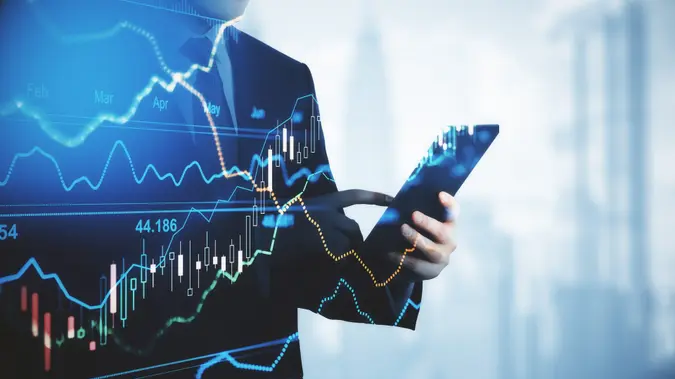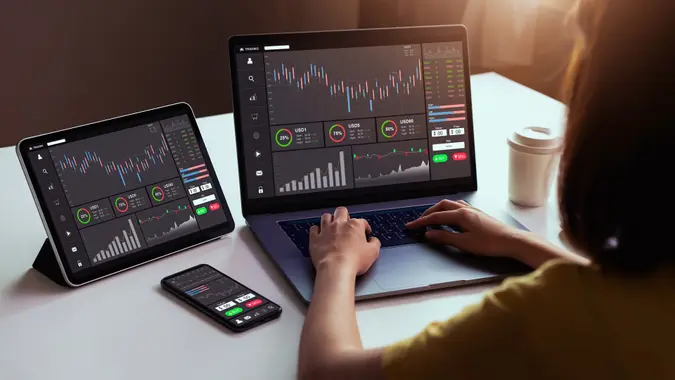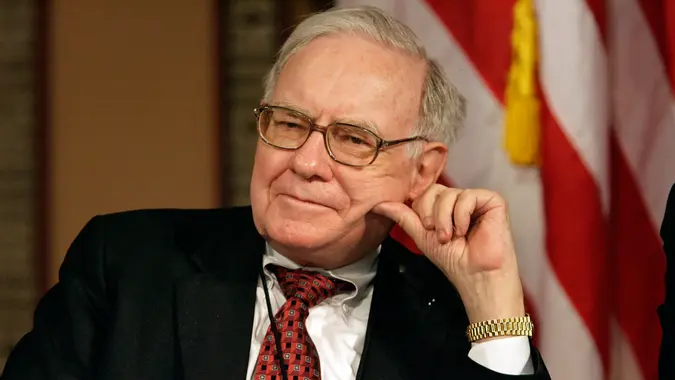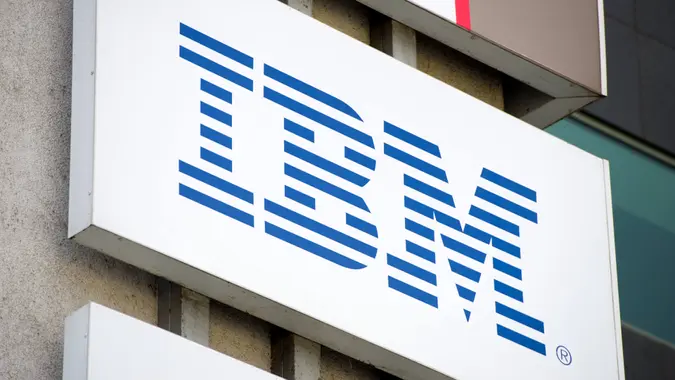This Mark Cuban-Backed Company Has Seen Its Stock Soar in 2025: Should You Buy?

Commitment to Our Readers
GOBankingRates' editorial team is committed to bringing you unbiased reviews and information. We use data-driven methodologies to evaluate financial products and services - our reviews and ratings are not influenced by advertisers. You can read more about our editorial guidelines and our products and services review methodology.

20 Years
Helping You Live Richer

Reviewed
by Experts

Trusted by
Millions of Readers
When Mark Cuban backs an investment, people take notice. The self-made billionaire has a track record of successful investments, so when he endorses a company, it usually makes headlines.
One of Cuban’s investments, Dave Inc. (DAVE), has generated buzz in the markets, helping propel the stock to big gains thus far in 2025. But will stock market momentum and the backing of a high-profile investor continue to drive shares of Dave higher, or do the risks outweigh the potential upside? Here are some things to consider.
Fundamentals Pushing Shares Up
The backing of Cuban has no doubt brought investor attention to Dave, but that’s not enough to sustain a high share price. What investors are really betting on with Dave is skyrocketing growth.
Dave is a banking app that is “designed to make finances easier,” in the words of the company. The app’s main attraction for those strapped for money is the ability to get up to $500 in five minutes or less through a feature known as “ExtraCash.” Essentially, it’s an interest-free short-term loan designed to help people living paycheck to paycheck.
Whatever the app is doing seems to be popular. Revenues are booming, as are originations of the company’s featured “ExtraCash” product. Perhaps even more impressive is that the rapidly growing company is already demonstratively profitable, and its cash balances are actually rising.
Here are some specific data points from the company’s second quarter earnings release on Aug. 6, all on a year-over-year basis.
- Revenue grew 64%, to $131.7 million
- Net income rose 42%, to $9.1 million
- Adjusted net income jumped 233%, to $45.7 million
- Adjusted earnings before interest, taxes, depreciation and amortization (EBITDA) skyrocketed 236%, to $50.9 million
- GAAP earnings per share (diluted) increased 32%, to $0.62
- Adjusted EPS (diluted) was up 210%, to $3.14
Additionally, the company raised its 2025 revenue and adjusted EBITDA guidance to $505 million to $515 million and $180 million to $190 million, respectively.
All of these factors are signs of a rapidly growing company, something that makes market participants willing to pay a premium.
What Do the Technical Charts Say?
For momentum investors, Dave remains a Wall Street darling. As of Nov. 14, the stock is up about 138% on a year-to-date basis, even though it remains below its high set in early July.
According to MarketWatch, the average 12-month analyst price target is $300, suggesting further gains in the next year. All eight analysts tracking the company have a “Buy” rating on the stock.
Risks
Most rapidly growing companies carry higher-than-average risk in exchange for the chance of outsize profits. If the company fails to meet the spectacular projections that analysts and investors have, its share price could rapidly plummet. Similarly, if at some point investors feel the valuation of the company has gotten stretched, they could book their profits and tank the share price.
But these are only some of the potential risks. According to Reuters, the U.S. Department of Justice and the Federal Trade Commission have an ongoing case against the company, alleging that it misled users by advertising cash advances of up to $500 that never materialized. This is just one example of how regulatory and legal factors could stunt the company’s growth.
Beyond these wide-ranging risks, the company is subject to the same market and economic conditions as other financial companies. Financials are particularly sensitive to changes in interest rates, and Dave in particular is closely tied to the economic health of Americans. A reduction in consumer spending — or an increase in defaults — could rapidly turn profits into losses.
The Bottom Line
Dave is a classic example or a high-risk, high-reward stock. On the plus side, revenues and earnings are spiking, momentum in the stock is high and analysts have bullish forecasts. On the downside, the stock is volatile, is richly priced and faces a multitude of headwinds, from competition to legal risk to failures in execution.
Overall, it’s best suited for speculative investors who can accept the risk of large losses.
 Written by
Written by  Edited by
Edited by 

























